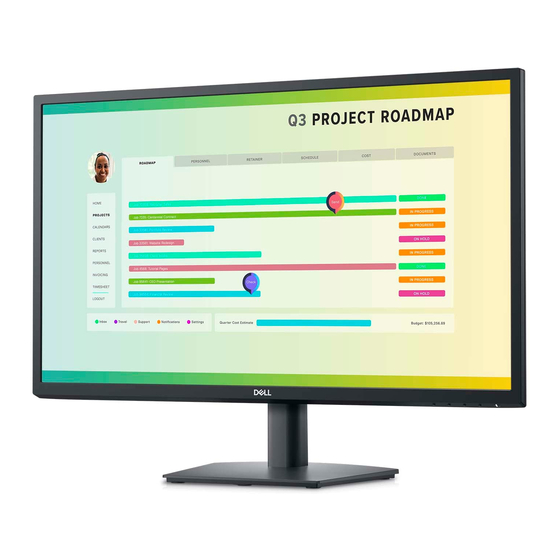Dell E Series Pelatihan - Halaman 14
Jelajahi secara online atau unduh pdf Pelatihan untuk Laptop Dell E Series. Dell E Series 43 halaman. Vesa mounting bracket
Juga untuk Dell E Series: Petunjuk Instalasi (5 halaman), Panduan Servis (25 halaman)

Significance of the Keyboard Bezel
The Latitude, Precision, and Vostro notebooks include a
component called the keyboard bezel. The bezel is essentially a
thin plastic strip. Removing the keyboard bezel facilitates
checking for certain anomalies, which is invaluable from a
diagnostic perspective.
The keyboard bezel:
•
May house the diagnostic LEDs
•
Facilitates checking the LCD‐system board connection and the integrity of the power button contact
with the system board (older systems may connect with a cable)
The Diagnostic LEDs that provide relevant troubleshooting information, like no POST issues, are also
referred to as the "lock lights."
The Precision and Latitude notebooks may differ from each other in the location of diagnostic LEDs. You
should always refer to the system‐specific online documentation to acquaint yourself with the features
of the notebook you are troubleshooting.
Dell Latitude XT Chassis Awareness
Objective
TM
The Latitude
XT is Dell's first entry into the tablet PC space. The Latitude XT ushered in a new era of
mobile computing, with the inclusion of integrated pen support, Multiple Gesture touch screen support,
digital ink input, handwriting recognition technologies, and innovative hardware.
The objective covered in this module is to identify the features of the Dell Latitude XT Chassis.
The Latitude XT
Product Design
The Latitude XT is designed to function both as a convertible notebook with a screen that can swivel
360 degrees, and as a "slate" design, which lies flat like a paper notebook. Since the "slate" mode is the
primary usage model, the Latitude XT is based on an ultra‐light architecture and component set that
reduces form and weight and maximizes run‐time. Some of the key benefits are:
•
Size and weight
•
Dual mode (pen‐and‐touch) capability
•
Structural integrity
•
Usability (with focus on "slate" mode)
•
Performance
14 | P a g e
